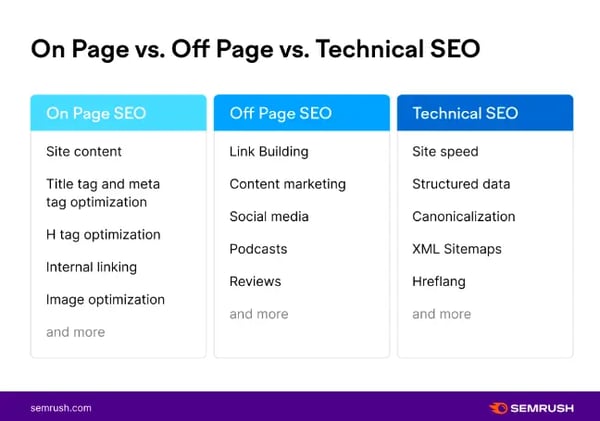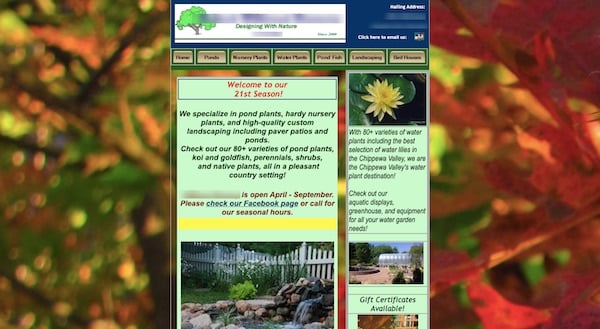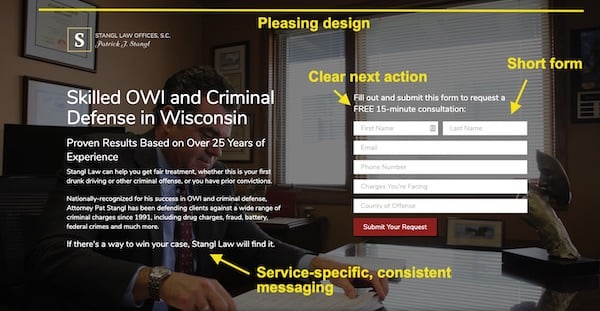Should your business focus on acquiring leads through an SEM strategy or focus its efforts on improving SEO for lead generation?
For B2B lead generation, the answer isn't always cut and dry.
To get to the bottom of what will be the most effective strategy for your business, you'll want to evaluate the pros and cons of both SEM and SEO against your business goals and the search landscape you're trying to break into.
Read on to explore both strategies and why it may be beneficial for your B2B company to put both into practice.
TABLE OF CONTENTS
- What is Search Engine Marketing (SEM)?
- What is Search Engine Optimization (SEO)?
- SEO or SEM: how to determine which one your B2B needs more
- Combine B2B SEM with SEO for Better Lead Generation
What is Search Engine Marketing (SEM)?
In the past, SEM was a broad term for strategies that help a business improve their visibility on search engine result pages, including Search Engine Optimization (SEO), Pay Per Click (PPC) ads, and Social Media Marketing (SMM).
%20(1).webp?width=600&height=136&name=5ee78abcb406ea4d8fed916a_screenshot-www.google.com-2020.06.09-11_26_31%20(1)%20(1).webp)
A PPC ad; Source: Google
Today, SEM refers only to paid advertising, particularly PPC ads.
For those who are unfamiliar, PPC ads (also called paid search ads) are ads that businesses pay to have appear on search result pages. Every time a person clicks on your ad, your business pays a set amount of money to Google.
What is Search Engine Optimization (SEO)?
SEO is a suite of strategies businesses use to improve their organic search engine result visibility.
Unlike PPC ads, organic search engine results are ranked according to Google’s algorithms based on many different factors. In a nutshell, organic results are sorted by their potential usefulness to the searcher based on what they typed into the search bar.
%20(1).webp?width=600&height=550&name=5ee78b2a6f9ceb1b61b8e383_screenshot-www.google.com-2020.06.09-11_41_07%20(1)%20(1).webp) Some organic search results; Source: Google
Some organic search results; Source: Google
Search engine optimization strategies try to anticipate both what the searcher wants, and what factors search engine algorithms like. Many SEO experts are most concerned about Google’s search engine, since it is the most popular.
There are three main types of SEO: on-page, off-page, and technical.
On-page SEO
On-page (or on-site) SEO refers to strategies that make the design and copywriting of web pages as appealing as possible to both readers and search engine algorithms.
This includes strategies like:
- Keyword targeting (incorporating the right keywords into different areas of a web page)
- Using headlines and subheadings to organize content
- Linking to helpful resources on other sites
- Writing high-quality, original content
 Source: Semrush
Source: Semrush
Off-page SEO
These strategies largely focus on getting other websites to link to yours (an important search ranking factor) and managing your business’s presence around the web.
This includes monitoring and responding to online reviews, managing references to your business information (citations) on listing sites, social media, and elsewhere, and earning links to your website from reputable websites.
Technical SEO
Technical SEO focuses on web development that improves the user experience of your company website.
.jpg?width=600&name=5ee78d8cf5bcf412245ff82d_screenshot-www.wordstream.com-2020.06.09-13_53_26%20(1).jpg) Source: WordStream
Source: WordStream
This includes strategies like decreasing your site’s page load speed, securing your site so it is harder to hack, and making sure your website looks great on any device, to name a few.
To learn more about SEO, check out our free guide.
SEO vs. PPC: Pros and Cons
For the sake of simplicity, let’s compare SEO to what some say is the focus of SEM: PPC strategy. Each one has distinct strengths and weaknesses.
.jpg?width=319&name=5f7e16dd6b96c5aa218ba340_Screen%20Shot%202020-10-07%20at%202.27.13%20PM%20(1).jpg)
Pay Per Click
Ranking position
One of the biggest advantages of PPC strategy is that it guarantees real estate in high value areas, even on crowded results pages.
You can push your website to the top of Google’s search results page by running a pay-per-click campaign through Google Ads. This gives your company the chance to essentially "rent," one of the top search engine results pages for any keyword.
Plus, smaller brands can compete against bigger brands who are beating them in organic search results by running PPC ad campaigns.
Depending on the amount a small company is willing to pay for a click, they may be able to appear above their competitor’s organic search results, increasing the odds that they will be able to catch the eye of a potential customer.
According to Google, ads may appear at the top, bottom, or on the side of a results page, depending on the search the reader makes. As a result, paid ads eat up the best spots. This is even more apparent when it comes to searches performed on a mobile device.
This means that for some keywords, you'll never be able to appear in a desirable place on a search engine results page—even if you follow SEO best practices and end up with a number one organic ranking position.
Take a look at how hard it is to find the No. 1 naturally ranking result through all the paid ads:
.jpg?width=600&name=5efb833843b299224e6a6357_5ee8d33a17068b101dbaecfe_screenshot-www.google.com-2020.06.16-09_07_32%20(1).jpg) Source: Google
Source: Google
While the screenshot above doesn't represent every case, it's worth testing to see if the keywords that are important to your industry produce results pages like this one.
If they do, you may want to consider a B2B SEM campaign to ensure your website shows up in a place where a good chunk of searchers will see it.
Speed of results
Another advantage to PPC strategy is that you can set up a Google Ads campaign relatively quickly, and have the potential to get clicks as soon as it goes live.
SEO tends to be a long-term strategy that takes time to set up and more time to start significantly generating leads.
There’s no standard amount of time to expect results, but typically you can expect an SEO strategy to start to pay off in a few months to a few years.
Ease of strategy adjustment
PPC ad campaigns are easy to tweak. Say your campaign isn’t doing as well as you hoped.
However, one of your ads within the group is doing better than all the rest. The main difference is that this ad includes the local keyword “WI” in the headline, unlike the others.
This might suggest you should add "WI" to other ads, which you can do in just a few clicks.
Frequent, iterative adjustments are a best practice for PPC experts, and may only take a few minutes per week depending on the size and scope of your campaign.
You can often see whether the tweaks had any effect quickly. It might take longer to see what effect a similar adjustment for SEO, like updating a blog post, has on driving traffic.
Good for testing
PPC campaigns tend to have a set beginning and end date, unlike SEO content, which can passively generate leads for years. As a result of the speed, ease, and short time frame of PPC campaigns, they’re a great tool for testing.
For example, maybe your business is new and you’re not entirely sure what keywords your buyers most often typically use.
By testing several different keyword variants within an ad group, you can see which keywords are most likely to result in lead conversion, and how much they cost.
This way, it’s easy for you to sort through a manageable amount of data, and apply that knowledge to the next PPC campaign, without investing a lot of resources into a single strategy that might not work.
Targeting
Last but not least, PPC ads can specifically target an audience by geographical area, time of day, demographics, and more through Google’s ad settings. These are the only people who will see your ads. Google can surface organic search results, on the other hand, to anyone.
Search Engine Optimization
Cost
One of the major advantages of SEO is likely cost. While businesses may decide to pay for an SEO practitioner’s expertise, they do not pay for each click.
With PPC, businesses pay to appear for particular keywords. Many businesses want their ads to appear for the same keyword, but there are only so many slots for ads.
As a result, they compete by “bidding” a certain amount of money for the best spots on the search result page, and to appear the most frequently.
Assuming all else is equal (ad quality can also play a role, for example) whoever bids the most money will appear the most often when someone searches for that specific keyword.
When someone clicks on their ad, the business will have to pay Google up to whatever amount they bid.
Some keywords are more valuable, (and expensive) than others. For example, in the legal industry during May 2020, the most expensive keyword was “houston maritime attorney.” Each click cost the top bidding business $1,090.
Potential for Long-term Returns
While PPC has the potential to attract leads as soon as the campaign is active, when you turn the campaign off, you turn off the tap on leads.
Combined with the expense of clicks, PPC is often a short-term strategy that supplements other marketing efforts.
SEO takes time to set up, and works best when you have clearly identified your buyer personas.
However, after you create optimized content, for example, those same blog posts, guides, and videos have the potential to bring in leads for months, or even years after you first published them.
If PPC is like a lead-generating sprint, SEO is a marathon. When done right, SEO may be able to give you a better long-term return on your investment.
SEO works best for more specific keyword phrases
There are times when the competition for PPC is so steep, that it’s easier to rank in organic search with SEO content.
.jpg?width=600&name=5efb85cc66f14000af654c59_5c6d7f4342d8c65efe255986_long-tail%20(1).jpg) Source: WordStream
Source: WordStream
Less generic keywords, like "benefits of buying managed it services in 2023" or "it managed services vs in-house" tend to have less competition and appear on less crowded results pages than more generic keywords, like "it managed services."
These long keyword phrases are called long-tail keywords. Because they’re so specific, the chances of other companies targeting the same longer-tail keywords is lower.
If the keyword ranking difficulty is light, it might be easier to grab one of the top organic spots with SEO.
There are many ways to evaluate whether you can earn rank for a particular keyword. Moz’s keyword research guide is a great resource for learning to find the best keywords.
Your goal will be to target the best keywords (and their close variants) by publishing website content that addresses questions your customers might have and also uses those keywords.
Focus on being informative, so your content serves a purpose. Ultimately, SEO strives to give the searcher what they want.
Typically, the searcher wants one of four things: 1) to find something, 2) to learn something, 3) to buy something, or 4) to find a vendor.
Here are few examples of content that gives searchers what they want:
- Helpful blog posts or pages that answer potential customers’ questions, like “How to Make a Departmental Budget?”
- Pages that help potential customers figure out how to solve a specific problem, like “Green Up Your Franchise: Eco-friendly Practices for Franchises.”
- Guides that help potential customers learn all about a specific topic, like “Self-publishing Options for Nonprofits”
- Checklists that help a potential client solve a problem themselves, like “Checklist: What You Need to Know Before Approaching an SEO Agency”
- Pages that answer searchers’ frequently asked questions.
If you're consistently publishing website content that 1) uses low-competition, high-volume keywords and 2) is highly relevant to potential customers, you're well on your way to earning search rank through a B2B SEO content marketing.
Featured snippets offer another opportunity to use SEO to position your B2B’s content at the top of a Google SERP. Google wants to be a one-stop shop for searchers. You've probably noticed featured snippets—short answers that quickly satisfy your search query.
What can businesses do to make sure they are represented and aren't pushed even further down the search results page?
The answer is simple. Consider the questions that searchers would ask that would bring them to your company’s website. Then make sure those questions are answered on your site. The key is writing a concise and informative answer.
.jpg?width=600&name=5ee7967a8746a92f9a51de16_screenshot-www.google.com-2020.06.10-11_10_18%20(1).jpg) Source: Google
Source: Google
To do this, you could add more relevant, general questions to your business’s FAQ page that people might search for.
Similarly, if your company regularly publishes blog articles, include a question and answer section relating to that particular topic.
Not only does that position your post to be picked up for a featured snippet, it also quickly provides information to visitors who don't have time to read an entire post.
One caveat to featured snippets—as Google's goal is to become the one-stop shop, they're focused on providing the best answer to a searcher's query.
It would not be surprising to see a dip in traffic to a particular page—or your site in general—if you can find success with this strategy. Don't worry too much, as traffic to your site is not always the best metric to track.
While many searchers may find the answers to their questions in the featured snippet, others will still need to learn more and will click through to your page. They see that Google trusts you as the best answer, which can provide you with an immediate boost in trust as well.
The takeaway: B2B SEM works quickly, but B2B SEO has more long-term potential.
While most businesses can stand to benefit from both SEO and SEM, not as many businesses are in a position to capitalize on both. So, how do you choose which one to prioritize?
SEO or SEM: how to determine which one your B2B needs more
Do you need fast results or steady lead generation?
A major consideration in the SEO vs. SEM debate is your marketing goal.
If you're hoping to build out a strategy that can help your B2B generate leads for months and years to come, SEO is probably a better option because the content you produce today could potentially bring visitors to your site for a long time.
But if you're under pressure to produce a lot of leads in a hurry, SEM is probably a more attractive option because it works right away.
If you have both short- and long-term goals to hit, a mix of both is probably best.
How fierce is the competition?
Many businesses can find valuable, low-cost keywords to target for their PPC campaign. However, what if some of the most important keywords for your industry are competitive?
One strategy is to go after keywords with SEO that would be unaffordable with PPC, then go after less competitive keywords with paid advertising.
With SEO, you have a chance at appearing on the first page of Google and attracting leads for only the cost of an expert’s time. Plus, organic results can appear every time someone searches for your target keyword, rather than just part of the time, like paid search ads.
For less competitive (cheaper) keywords that suggest the searcher has high buying intent, PPC might make sense.
Do you have the infrastructure to help leads convert?
If your website is out-of-date, not secure, and lacks dedicated landing pages for your ad campaigns, you may need to address these structural problems first.
This was the case for one of our clients, who spent a lot of money on ads but did not have the infrastructure to encourage leads to convert once they landed on his site.
In these situations, you may want to invest some time in SEO for your website. First impressions are everything. Well-designed, secure websites reassure customers that you are professional and that their personal information is safe if they continue to use your site.

By the same token, directing PPC prospects to landing pages customized to reflect the same messaging as your ad set tend to be “more effective” at converting leads than sending prospects to a more generic page.

A good landing page; Source: Stangl Law
Sometimes, the question is not whether SEO or SEM is more important, but when to invest in SEO and when to invest in SEM.
Combine B2B SEM with SEO for Better Lead Generation
Ultimately, there is room for most businesses to use both SEO and SEM as a strategy to obtain B2B leads.
B2B search engine marketing can be used to drive traffic and leads in the short term, while simultaneously building organic ranking strength for less competitive keywords via search engine optimization.
Which one you choose to emphasize at a given time depends on the unique needs of your B2B business.
Topics: Search Engine Optimization, Advertising
Chris Murvine, CEO
Chris Murvine has worked in the digital marketing industry for over 20 years, developing expertise in technical-marketing strategies and growth-platform implementations. He founded Madison Marketing in 2008. Outside of the office, he enjoys spending time with family, camping, and riding all-terrain vehicles.





